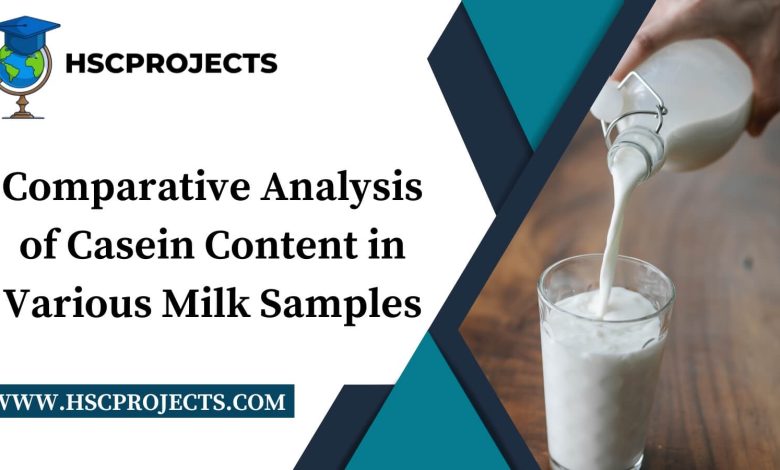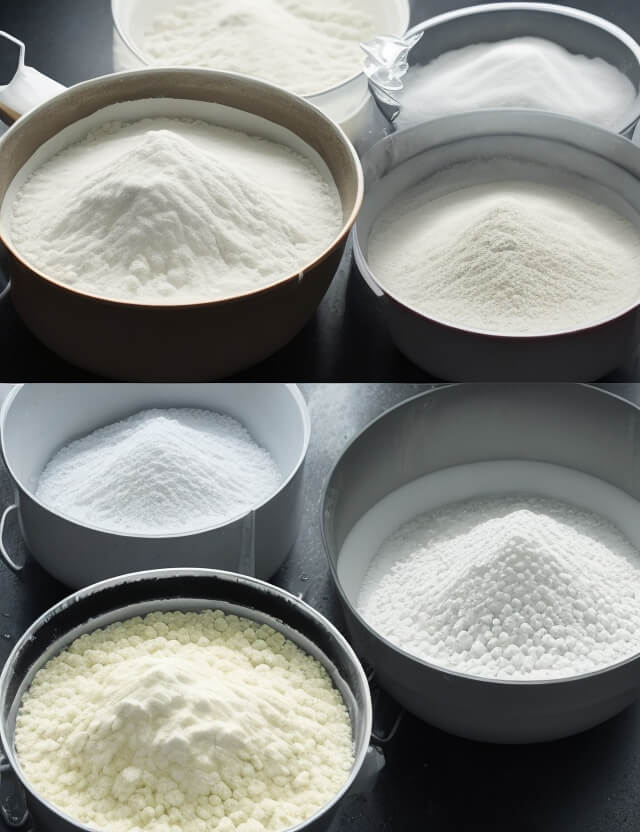
Comparative Analysis of Casein Content in Various Milk Samples
Introduction to Casein in Milk
Casein, comprising about 80% of milk protein, plays a pivotal role in the nutritional value of milk. This project aims to assess the amount of casein in different milk samples, including cow, goat, and buffalo milk, and commercial milk products. The primary focus is to understand the casein protein content variation across these samples.

Significance of Casein
Casein is a slow-digesting protein with vital nutritional benefits. It is a complete protein containing all essential amino acids. The study of casein levels in milk is crucial for nutritional analysis, dairy product formulation, and understanding dietary impacts.
Experimental Procedure for Casein Determination
- Materials Required: Beakers, funnel, glass rod, balance, test tubes, filtration flask, Bunsen burner, milk samples, acetic acid solution, and ammonium sulfate solution.
- Process Overview: The procedure involves adding ammonium sulfate to milk samples to precipitate casein and fat, followed by acetic acid addition to separate casein from fat. The precipitated casein is then dried and weighed for quantification.

Observations and Results
- Yield of Casein: The experiment revealed varying amounts of casein in different milk types. Cow milk showed the highest casein content, followed by goat and buffalo milk. Market milk samples also displayed diverse casein levels, indicating potential adulteration or processing differences.
- Quantitative Analysis: This detailed study provides valuable insights into the casein content of various milk types, offering a guide for dairy industries and consumers about the nutritional profile of these milk sources.
Conclusion and Implications
The study concluded that cow milk has the highest casein content among the samples tested, making it an excellent source for muscle growth and bodybuilding nutrition. The lower casein content in goat milk, coupled with its higher mineral content, offers an alternative for individuals with casein sensitivity.
References
- Wikipedia on Casein: https://en.wikipedia.org/wiki/Casein
- Milk Composition Facts: http://www.milkfacts.info/Milk%20Composition/Milk%20Composition%20Page.htm
- Patricia Trueman’s “Nutritional Biochemistry”
- Chemistry of Milk: http://nem.org.uk/chem1.htm
- FAO’s Report on Small Holder Milk Production: Food and Agricultural Organization of the United Nations, 2010
In order to download the PDF, You must follow on Youtube. Once done, Click on Submit
Follow On YoutubeSubscribed? Click on Confirm
Download Comparative Analysis of Casein Content in Various Milk Samples PDF






